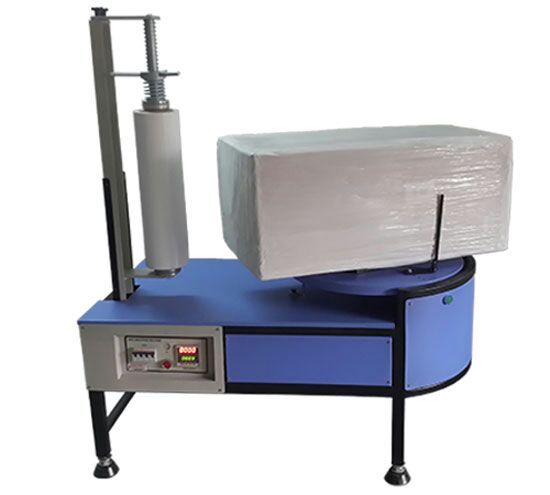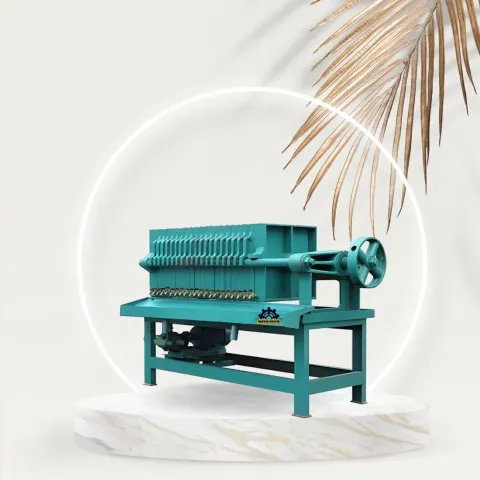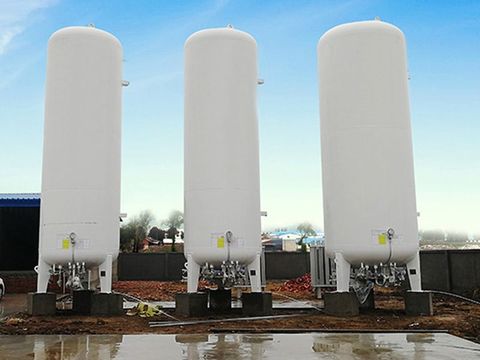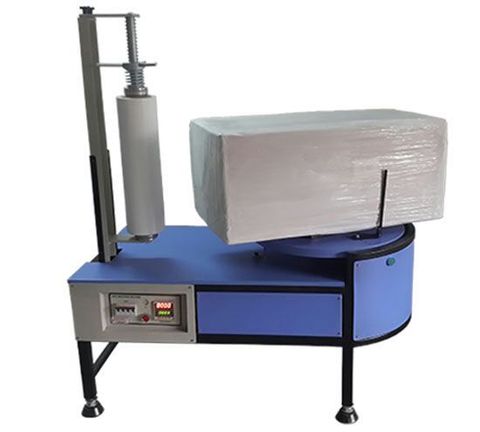Discover the World of Stretch Film Wrapping Machines: Overview, Knowledge, and Useful Tips
Stretch film wrapping machines are automated or semi-automated systems designed to wrap stretch film around products or pallets to secure them during storage and transportation. The film’s elasticity keeps items tightly bound, protecting them from dust, moisture, and movement damage.
These machines play a critical role in logistics and packaging industries, where efficiency, safety, and load stability are essential. By using mechanical wrapping instead of manual labor, companies achieve faster output and more consistent packaging quality.
Stretch film wrapping machines exist because businesses across manufacturing, retail, food, and logistics sectors need a reliable way to stabilize loads, reduce product waste, and enhance warehouse operations.
Why Stretch Film Wrapping Machines Matter Today
In today’s global supply chain, packaging is not just about protection—it’s about efficiency, sustainability, and compliance. Stretch film wrapping machines contribute to these goals by:
-
Improving Productivity: Automated wrapping allows consistent packaging speed and reduces labor-intensive work.
-
Enhancing Safety: Secure packaging prevents product shifting, minimizing damage during shipping.
-
Supporting Sustainability: Modern films use recyclable materials and minimize excess film usage.
-
Reducing Operational Errors: Machines ensure uniform tension and coverage, reducing human error.
These systems benefit a wide range of industries including FMCG, pharmaceuticals, agriculture, and electronics. With e-commerce and global trade expanding rapidly, secure and eco-friendly packaging has become a top priority for both manufacturers and distributors.
According to MarketsandMarkets (2024), the global stretch wrapping machine market is projected to grow steadily due to automation and sustainable packaging demands.
Recent Updates and Emerging Trends
The stretch film wrapping machine industry has evolved significantly over the past few years. Between 2023 and 2025, several developments have reshaped how companies use these machines:
-
Sustainability Focus: Manufacturers are now designing energy-efficient machines that minimize film waste. Stretch films made from recycled or biodegradable materials are gaining popularity.
-
Smart Automation: Integration of IoT and AI has improved machine efficiency. Sensors and digital controllers now adjust film tension automatically based on load type.
-
Compact and Portable Designs: Small and medium businesses prefer semi-automatic models that save floor space while maintaining output efficiency.
-
Global Supply Chain Resilience: The post-pandemic shift towards automated packaging has encouraged industries to reduce manual dependency and ensure consistent delivery speeds.
-
Regional Developments: In 2024, Asian markets—especially India and China—saw a surge in domestic machine manufacturing, driven by government incentives and industrial modernization programs.
These changes reflect how stretch wrapping has transitioned from a simple packaging step to a vital part of modern logistics strategy.
Regulatory and Policy Insights
The use and manufacturing of stretch film wrapping machines are influenced by industrial safety, environmental, and trade regulations. Key aspects include:
-
Environmental Standards: Many countries are enforcing regulations that promote recyclable or biodegradable films. The European Union’s Packaging and Packaging Waste Regulation (2024) emphasizes waste reduction and sustainable material use.
-
Industrial Safety Norms: Machines must comply with ISO 12100 standards for mechanical safety. Automatic shut-off and emergency stop systems are now mandatory in most regions.
-
Energy Efficiency Programs: Government policies encourage manufacturers to adopt energy-efficient motors and drives to reduce carbon emissions.
-
Trade and Import Guidelines: In markets like India and the U.S., import tariffs and quality certifications affect machine availability and pricing structures.
Compliance with these policies ensures that packaging operations remain safe, efficient, and environmentally responsible.
Useful Tools, Resources, and Platforms
Learning about or working with stretch film wrapping machines becomes easier with the right tools and references. Below are some valuable resources:
Online Calculators and Tools:
-
Film Usage Calculator: Helps estimate film consumption per pallet.
-
Load Stability Calculator: Evaluates wrapping tension and film layers needed.
-
Energy Efficiency Analyzer: Estimates power consumption and operational cost per cycle.
Educational Websites and Databases:
-
Packaging World (packworld.com): Industry updates, innovations, and case studies.
-
Flexible Packaging Association (flexpack.org): Reports on sustainability and technology.
-
Machinery Update (machineryupdate.co.uk): News and product reviews from the packaging equipment sector.
Training and Learning Resources:
-
YouTube Technical Tutorials: Offer step-by-step guides for machine setup and maintenance.
-
Online Learning Platforms: Courses on industrial automation and packaging technology (Coursera, Udemy).
-
Manufacturers’ Knowledge Hubs: Many brands publish technical manuals, machine configuration videos, and troubleshooting guides.
Sample Data Comparison Table
| Machine Type | Automation Level | Typical Users | Film Efficiency | Notable Feature |
|---|---|---|---|---|
| Manual Wrappers | Basic | Small Warehouses | Moderate | Portable and affordable |
| Semi-Automatic | Medium | SMEs | High | Adjustable speed & tension |
| Fully Automatic | Advanced | Large Manufacturers | Very High | Conveyor integration & sensors |
These resources help learners and professionals understand both the technical and practical sides of stretch wrapping machines.
Frequently Asked Questions
1. What is the main function of a stretch film wrapping machine?
It wraps stretch film around pallets or products to secure them for storage and transport. The machine ensures even film application and tight wrapping to prevent shifting or damage.
2. What are the main types of stretch film wrapping machines?
They include manual, semi-automatic, and fully automatic systems. Semi-automatic machines are commonly used by medium-sized businesses, while large industries prefer fully automated solutions.
3. How does automation improve packaging efficiency?
Automation reduces wrapping time, ensures consistent quality, and minimizes film waste. It also lowers the risk of workplace injuries related to manual wrapping.
4. Are stretch films recyclable?
Yes, most modern stretch films are made of linear low-density polyethylene (LLDPE), which can be recycled. Some brands also produce biodegradable alternatives.
5. What safety measures should operators follow?
Operators should ensure proper training, use protective gloves, and follow manufacturer safety instructions. Machines must include emergency stop features and regular maintenance checks.
Conclusion
Stretch film wrapping machines have become an integral part of modern packaging systems, ensuring safe, efficient, and sustainable product handling. Their growing adoption across industries reflects the global shift toward automation and environmental responsibility.
With ongoing innovations such as smart sensors, AI-assisted controls, and eco-friendly films, these machines are shaping the future of logistics and warehousing. Whether you are an industry professional, student, or simply interested in packaging technology, understanding the fundamentals of stretch film wrapping machines helps appreciate how innovation supports safer and more sustainable supply chains.







